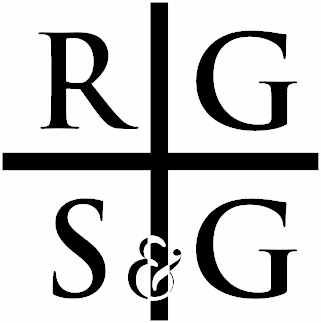Pennsylvania residents who have been following the development of autonomous driving technology may have heard that on Feb. 14, a Google self-driving car became involved in an accident involving a Mountain City, California, bus. The company stated that the self-driving vehicle was at least partially responsible for the accident.
According to Google, the self-driving Lexus 450 hybrid SUV was traveling in the right lane of a city street. The vehicle moved back into the center of the lane to avoid hitting obstacles in the roadway, causing a city bus that was already traveling in that lane to bump it from behind. No one suffered any injuries in the minor fender bender. The Google car was reportedly only traveling about two mph while the bus was traveling about 15 mph. The self-driving car sustained some damage.
In a statement, Google said that the vehicle’s test driver thought that the bus would yield while the bus driver thought that the Google car would yield. Google said that the self-driving car clearly was at least partially responsible for the scrape, as there would be no accident if the car had yielded to the bus. Google intends to ensure that its software understands that larger vehicles are less likely to yield.
Even a slow-speed car crash can result in serious injuries. While self-driving cars have the potential to dramatically reduce accidents, their widespread availability is still far off. A person who has been injured in a crash caused by a negligent motorist may want legal assistance in seeking compensation for medical expenses and other losses.
Source: CNN Money, “Google’s self-driving car at fault in the accident,” Chris Isidore, Feb. 29, 2016
Introduction
The development and implementation of self-driving cars have ushered in a new era in transportation, promising to revolutionize the way we travel. These autonomous vehicles offer the potential for increased safety, efficiency, and convenience on the roads. However, with this cutting-edge technology come new challenges, particularly in terms of safety and liability. In this article, we will delve into the incident involving Google’s self-driving car and a bus in California, exploring what it means for the future of autonomous vehicles and the ongoing evolution of self-driving technology.
Incident Overview
On February 14, 2016, a Google self-driving car was involved in a minor accident with a public bus in Mountain View, California. The incident occurred when the self-driving car, a Lexus SUV, was attempting to merge back into the center of the lane after encountering obstacles on the road. As the vehicle moved, it made contact with the side of the bus, which was traveling at approximately 15 mph. The self-driving car was moving at a much slower speed of around 2 mph. Fortunately, no one was injured in the accident, but the self-driving car did sustain some minor damage.
Causes of the Crash
According to Google, the self-driving car detected sandbags near a storm drain that were obstructing its path, prompting it to come to a stop. After waiting for other vehicles to pass, the car began to angle back toward the center of the lane at a slow speed of around two mph. During this maneuver, the car made contact with the side of a passing bus. The self-driving car had detected the approaching bus but predicted that the bus would yield to it, given that the car was ahead. However, the bus did not yield, resulting in a minor collision.
History of Autonomous Vehicle Accidents
Google’s self-driving cars have been involved in several minor accidents over the years, but this incident marked the first time one of the company’s autonomous vehicles was deemed at fault. Since 2009, Google’s self-driving cars have driven over 1.4 million miles on roads across the United States and have been involved in 17 different accidents. In all previous incidents, the accidents were attributed to human actions, such as another driver running a red light or a pedestrian stepping onto the road. This particular crash highlighted the complexities and challenges that autonomous vehicles face in real-world driving scenarios.
Public Perception and Education
The incident underscores the challenges of developing self-driving car technology that can adeptly handle complex and unpredictable situations. While self-driving cars have the potential to significantly reduce the number of accidents on the road, they are not yet infallible and can still make errors. It is essential to educate the public about the capabilities and limitations of self-driving cars, addressing concerns about safety and liability. As the technology continues to advance, it is crucial to foster open and honest discussions about the benefits and risks of autonomous vehicles. This ongoing dialogue will help build public trust and ensure that the transition to self-driving cars is as smooth and safe as possible.
Why Rubin, Glickman, Steinberg & Gifford P.C. Is Your Trusted Advocate After a Motor Vehicle Accident
Emerging technologies like self-driving cars bring new complexities to road safety and accident liability. At Rubin, Glickman, Steinberg & Gifford P.C., we have over 65 years of experience helping individuals across Pennsylvania navigate challenging legal situations, including those involving innovative technologies. Recognized by U.S. News & World Report and Pennsylvania Super Lawyers, we are committed to providing ethical and strategic representation.
Whether your accident involves traditional vehicles or cutting-edge autonomous technology, our team is prepared to help you seek compensation for medical expenses, lost wages, and other losses. Contact us at (215) 822-7575 or through our contact form to learn how we may assist you in protecting your rights.

Rubin, Glickman, Steinberg & Gifford P.C.
Pennsylvania Attorney's
January 29, 2025








